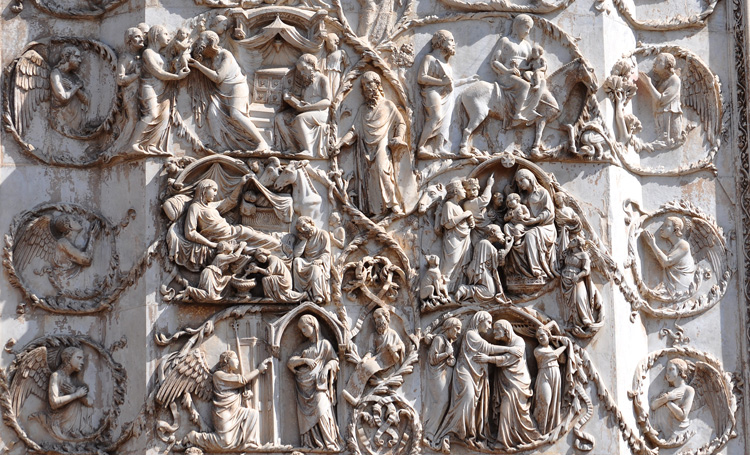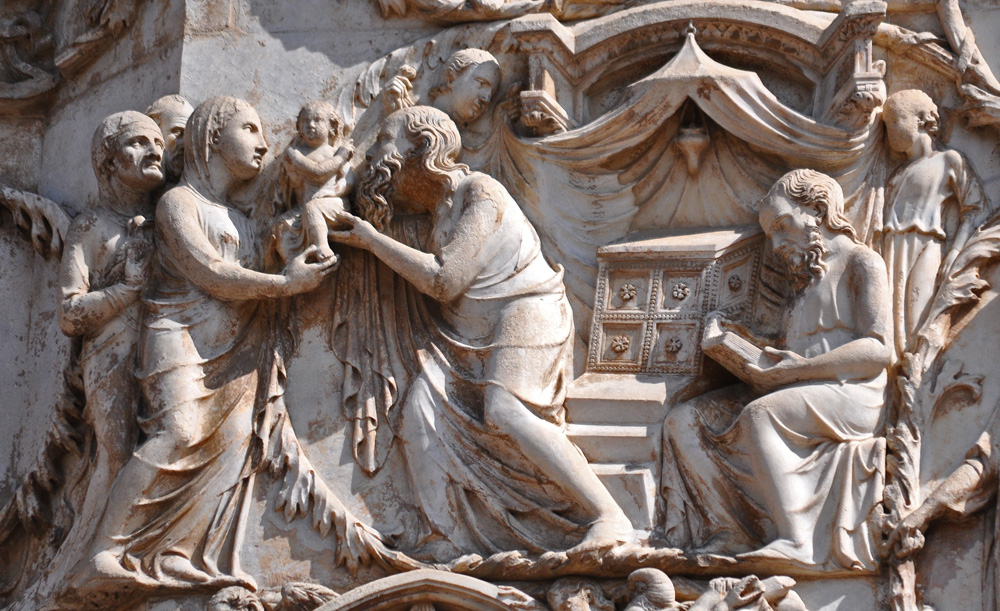
Lorenzo Maitani and Associates, The Presentation in the Temple

First half of the 14th century
Marble Relief
Detail from the west façade, Orvieto Cathedral, Italy
In the more intimate spirit of 14th-century art, the artists have dispensed with the cloth traditionally shown to cover Simeon's hands, and Simeon himself bends in lovingly toward the newborn Savior. The woman at Mary's back is probably Mary's cousin Elizabeth, who sometimes appears in Presentation images. She holds the two doves that the parents will offer to the Temple, so it is less likely that she would be Anna. Barely visible behind the two women is the receding hairline of what must be St. Joseph.

The figure seated at right with the book has the same curly beard, wavy hair, and high forehead as Simeon, so it is surely a second image of Simeon. His "waiting for the consolation of Israel" (Luke 2:25) is dramatized in the Chester Plays as a study of the books of the Old Testament (II, 205-206). There is also a book on the altar in
the 13th-century mosaic
of this scene in Santa Maria Maggiore. Nicholas of Lyra explains that "at that time it was the common opinion of the learned that the coming of Christ was imminent, according to the signs given to the patriarchs and prophets" (Glossa, V, 718, my translation).
In the background two figures pull aside the curtain to reveal the Temple's altar. The action seems to be a symbolic doubling of the Presentation event, whose Greek name, Hypopanti, means "re-presentation." A similar doubling may be the point of the Temple structure placed in the center of the word Hypopanti in this Greek mosaic a century earlier.
View this image in full resolution.
Read more about images of the Presentation in the Temple.
Photographed at the cathedral by Richard Stracke, shared under Attribution-NonCommercial-ShareAlike license.